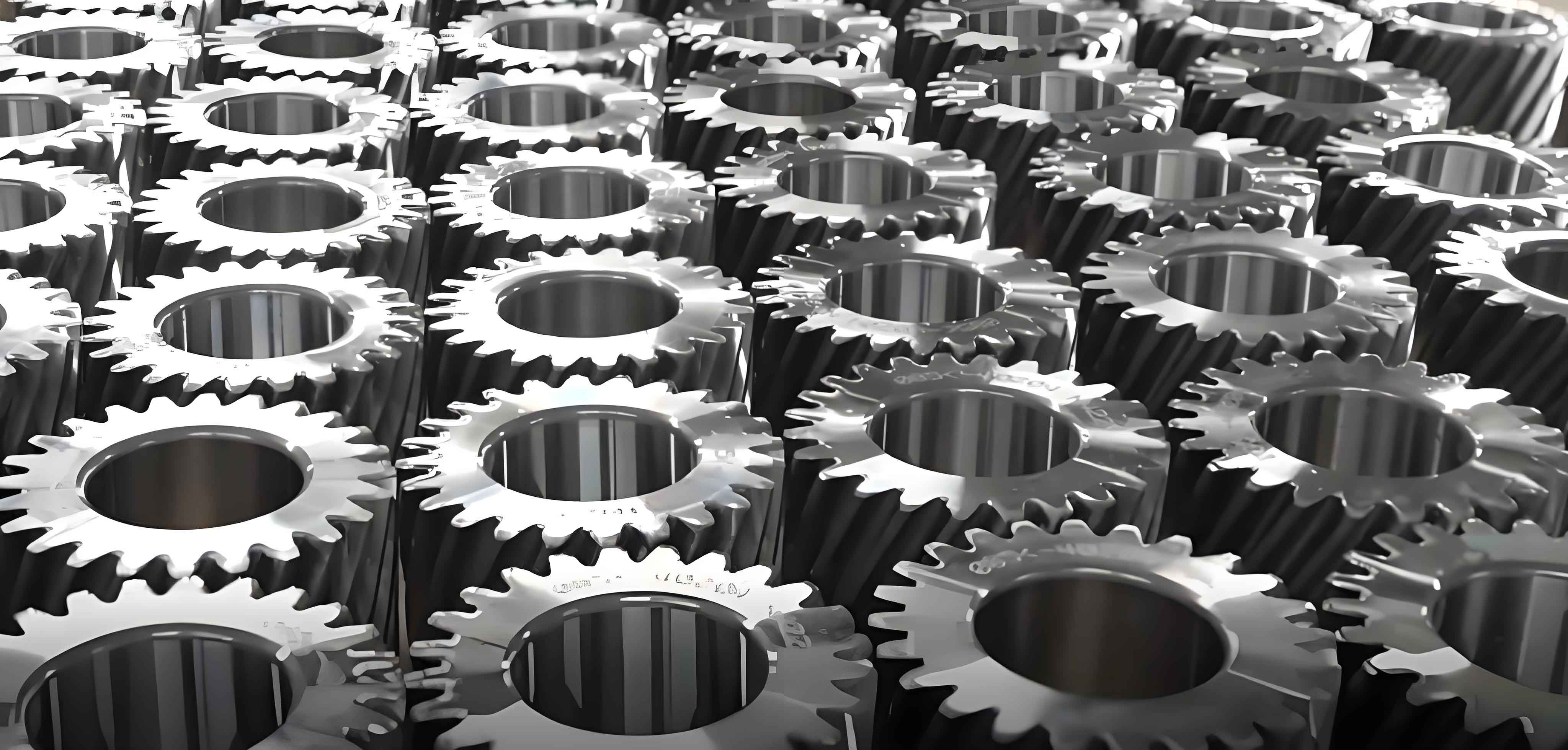In modern electric vehicles, transmission systems emerge as primary noise sources during operation. Effective noise reduction in transmissions is pivotal for achieving “silent mode” driving experiences. Among various noise contributors, gear meshing noise stands out as particularly significant. This necessitates in-depth research into gear modification techniques for electric vehicle transmissions.
Application Principles of Gear Modification Technology
During electric vehicle operation, paired involute spur gears alternate between single-tooth and double-tooth meshing states. This alternation causes fluctuating load distributions across gear teeth, leading to abrupt load shifts. When manufacturing errors combine with elastic deformation during standard meshing, geometric interference occurs. Crucially, elastic deformations during gear transitions affect subsequent meshing actions, generating additional elastic deformation forces that ultimately cause meshing impacts and NVH issues. Gear modification technology resolves these issues by compensating for elastic deformation during geometric interference events. This equalizes load distribution across meshing surfaces, significantly enhancing the operational stability of electric vehicle transmission systems. The mathematical foundation for maximum modification is expressed as:
$$e_k = \delta_i + x_{\text{max}}$$
Where \(\delta_i\) represents the maximum geometric interference due to manufacturing errors, and \(x_{\text{max}}\) denotes the maximum comprehensive deformation during meshing. Further refinement yields:
$$x_{\text{max}} = \frac{F_d}{\sum K_{vi}}$$
Here, \(F_d\) is the normal meshing force, and \(\sum K_{vi}\) represents the comprehensive meshing stiffness. When overlap ratio is below 2, stiffness simplifies to:
$$\sum K_{vi} = K_{v1} + K_{v2}$$
The stiffness at meshing point \(i\) is calculated using:
$$K_n = \frac{K_Z K_C K_{PV} + K_Z K_C}{K_Z K_C K_{PV}} \quad \text{and} \quad K = \frac{F_i}{\delta_{\sum i}}$$
These equations enable precise calculation of modification parameters essential for optimizing electric vehicle gear performance.
Methods for Gear Modification
Modification amounts depend on deformation during meshing and manufacturing tolerances. Leading manufacturers employ proprietary modification protocols refined through extensive testing. Key methodologies include:
| Parameter | Description |
|---|---|
| Maximum Modification Location | Gear tip and root regions |
| Critical Calculation | Deformation under load + manufacturing errors |
| Industry Approach | Proprietary algorithms + empirical refinement |
Parametric Modeling of Electric Vehicle Gears
Precision Modification Modeling
Gears in electric vehicle transmissions require exceptional design precision. Manufacturing accuracy critically impacts transmission efficiency, operational stability, and noise generation. Using Pro/E’s parametric modeling capabilities, we developed accurate 3D gear models with these parameters:
| Parameter | Driving Gear (Z1) | Driven Gear (Z2) |
|---|---|---|
| Module \(m_n\) (mm) | 2.5 | |
| Pressure Angle \(\alpha_n\) (°) | 20 | |
| Helix Angle \(\beta\) (°) | 26.7 | |
| Face Width \(b\) (mm) | 12 | |
| Tooth Count | 11 | 34 |
Finite Element Contact Analysis
Our parametric models underwent advanced contact analysis in ANSYS Workbench with these configurations:
- Material: 20CrMnTi steel (\(E = 2.2 \times 10^{11}\) Pa, \(\nu = 0.289\), \(\rho = 7860\) kg/m³)
- Meshing: 8-node hexahedral elements (0.4mm size)
- Operating conditions: 1800 RPM input, 90 N·m torque
- Contact algorithm: Newton-Raphson method

We evaluated three modification approaches for electric vehicle transmission gears:
| Scheme | Driving Gear Mod (mm) | Driven Gear Mod (mm) | Modification Curve | Max Contact Stress (MPa) |
|---|---|---|---|---|
| A | 0.20 | 0.50 | Fillet | 1010.58 |
| B | 0.27 | 0.26 | Linear | 920.41 |
| C | 0.20 | 0.20 | Parabolic | 820.64 |
Scheme C’s parabolic modification reduced contact stress by 18.8% compared to Scheme A, establishing it as the optimal approach for electric vehicle gear applications. This significant stress reduction directly translates to improved NVH performance and extended component life.
Conclusion
As environmental and comfort standards escalate, reducing transmission noise becomes increasingly critical in electric vehicles. Our research demonstrates that targeted gear modification effectively minimizes meshing impacts, prevents stress concentration, and equalizes load distribution. The parabolic modification strategy (Scheme C) proved most effective, reducing maximum contact stress by nearly 200 MPa compared to conventional approaches. These advancements directly contribute to quieter, more efficient electric vehicle transmissions with enhanced durability. Continued refinement of modification techniques remains essential for advancing electric vehicle gear technology and meeting evolving noise regulations.
